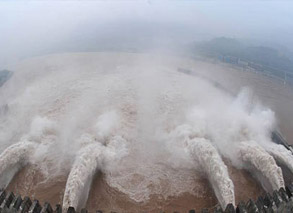Floats depict China's earth-shaking changes in 60 years
2009-10-01 14:47 BJTSpecial Report: 60th Anniversary of PRC |
BEIJING, Oct. 1 (Xinhua) -- With a "super hybrid rice" sheaf, a spaceship on wheels and foreigners donning in traditional Chinese suits, civilians marched through Tian'anmen Square Thursday morning to celebrate the 60th founding anniversary of the People's Republic of China.
The square became a stage for the Chinese people to showcase their economic and social progress through 19 brightly decorated floats, with each escorted by a formation of paraders, as well as mass performance.
The world's biggest urban square emerged as a sea of colors as 60 big red lanterns waved between 56 National Unity poles at the east and the west ends of the square. Tens of thousands of China roses in full blossom formed the characters "Guo Qing", or National Day.
"HYBRID RICE" TELLS CHINA'S FOOD MIRACLE
China has managed to achieve an annual 8.1 percent GDP growth in the past 60 years.
Today, while Western economies struggle out of contraction, China's 7.1 percent expansion in the first half of 2009 deserves the envy and admiration of the rest of the world.
However 60 years ago, the former U.S. Secretary of State Dean Acheson asserted the communist Chinese government was unable to feed the 546 million population since none of its predecessors had been able to do it.
The truth of China today proved Acheson was wrong.
At the nation's biggest-ever National Day pageant, a giant model of "hybrid rice" became an icon for the nation's 60 years of agricultural progress.
The high-yielding species was cultivated in the 1970s, which helped the 1.3 billion Chinese people feed themselves on their own.
Before 1949, backward technology and the reliance on hand-planting forced millions of people to the brink of starvation as China's per capita grain output was only 290 kilograms a year.
Food security remains the top priority for the government of the world's most populous country.
In the late 1970s, technological breakthroughs and the rural reform in particular helped unleash their enthusiasm of farmers to grow grain and boosted agricultural productivity.

 Mail
Mail Share
Share Print
Print


 Video
Video









 2009 China Central Television. All Rights Reserved
2009 China Central Television. All Rights Reserved